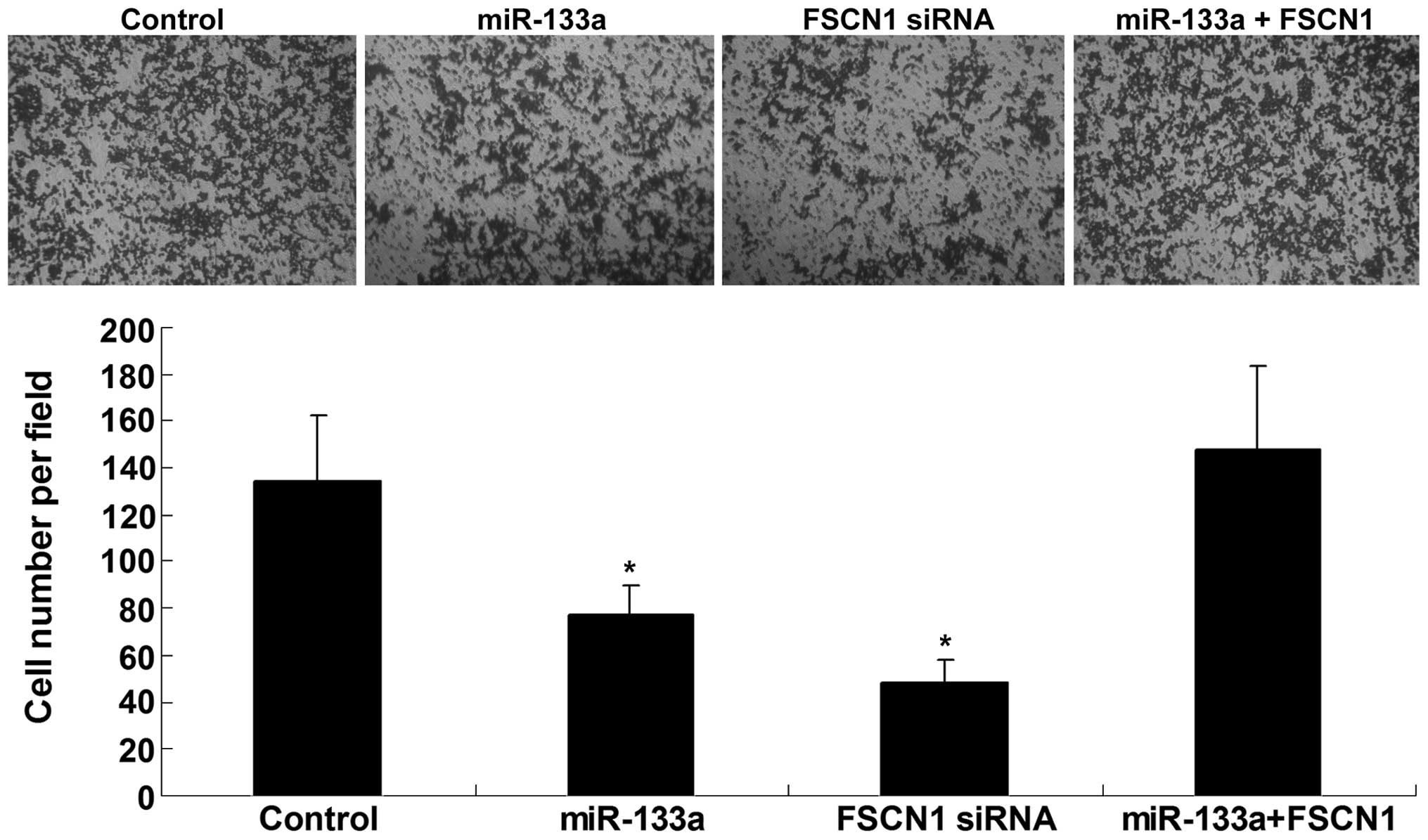|
1
|
Siegel R, Desantis C and Jemal A:
Colorectal cancer statistics, 2014. CA Cancer J Clin. 64:104–117.
2014. View Article : Google Scholar : PubMed/NCBI
|
|
2
|
Hammoud SS, Cairns BR and Jones DA:
Epigenetic regulation of colon cancer and intestinal stem cells.
Curr Opin Cell Biol. 25:177–183. 2013. View Article : Google Scholar : PubMed/NCBI
|
|
3
|
Okayama H, Schetter AJ and Harris CC:
MicroRNAs and inflammation in the pathogenesis and progression of
colon cancer. Dig Dis. 30(Suppl 2): 9–15. 2012. View Article : Google Scholar : PubMed/NCBI
|
|
4
|
Khare S and Verma M: Epigenetics of colon
cancer. Methods Mol Biol. 863:177–185. 2012. View Article : Google Scholar : PubMed/NCBI
|
|
5
|
Qian B, Nag SA, Su Y, et al: miRNAs in
cancer prevention and treatment and as molecular targets for
natural product anticancer agents. Curr Cancer Drug Targets.
13:519–541. 2013. View Article : Google Scholar : PubMed/NCBI
|
|
6
|
Fabbri M, Calore F, Paone A, Galli R and
Calin GA: Epigenetic regulation of miRNAs in cancer. Adv Exp Med
Biol. 754:137–148. 2013. View Article : Google Scholar
|
|
7
|
Wang LK, Hsiao TH, Hong TM, et al:
MicroRNA-133a suppresses multiple oncogenic membrane receptors and
cell invasion in non-small cell lung carcinoma. PLoS One.
9:e967652014. View Article : Google Scholar : PubMed/NCBI
|
|
8
|
Qiu T, Zhou X, Wang J, et al: MiR-145,
miR-133a and miR-133b inhibit proliferation, migration, invasion
and cell cycle progression via targeting transcription factor Sp1
in gastric cancer. FEBS Lett. 588:1168–1177. 2014. View Article : Google Scholar : PubMed/NCBI
|
|
9
|
Fujiwara T, Katsuda T, Hagiwara K, et al:
Clinical relevance and therapeutic significance of microRNA-133a
expression profiles and functions in malignant
osteosarcoma-initiating cells. Stem Cells. 32:959–973. 2014.
View Article : Google Scholar : PubMed/NCBI
|
|
10
|
Akanuma N, Hoshino I, Akutsu Y, et al:
MicroRNA-133a regulates the mRNAs of two invadopodia-related
proteins, FSCN1 and MMP14, in esophageal cancer. Br J Cancer.
110:189–198. 2014. View Article : Google Scholar :
|
|
11
|
Guo J, Xia B, Meng F and Lou G: miR-133a
suppresses ovarian cancer cell proliferation by directly targeting
insulin-like growth factor 1 receptor. Tumour Biol. 35:1557–1564.
2014. View Article : Google Scholar
|
|
12
|
Wang H, An H, Wang B, et al: miR-133a
represses tumour growth and metastasis in colorectal cancer by
targeting LIM and SH3 protein 1 and inhibiting the MAPK pathway.
Eur J Cancer. 49:3924–3935. 2013. View Article : Google Scholar : PubMed/NCBI
|
|
13
|
Park SH, Song JY, Kim YK, et al: Fascin1
expression in high-grade serous ovarian carcinoma is a prognostic
marker and knockdown of fascin1 suppresses the proliferation of
ovarian cancer cells. Int J Oncol. 44:637–646. 2014.PubMed/NCBI
|
|
14
|
Yamakita Y, Matsumura F, Lipscomb MW, et
al: Fascin1 promotes cell migration of mature dendritic cells. J
Immunol. 186:2850–2859. 2011. View Article : Google Scholar : PubMed/NCBI
|
|
15
|
Chen MB, Wei MX, Han JY, et al:
MicroRNA-451 regulates AMPK/mTORC1 signaling and fascin1 expression
in HT-29 colorectal cancer. Cell Signal. 26:102–109. 2014.
View Article : Google Scholar
|
|
16
|
Tsai WC, Chao YC, Sheu LF, Chang JL, Nieh
S and Jin JS: Overexpression of fascin-1 in advanced colorectal
adenocarcinoma: tissue microarray analysis of immunostaining scores
with clinicopathological parameters. Dis Markers. 23:153–160. 2007.
View Article : Google Scholar : PubMed/NCBI
|
|
17
|
Ye JJ and Cao J: MicroRNAs in colorectal
cancer as markers and targets: Recent advances. World J
Gastroenterol. 20:4288–4299. 2014. View Article : Google Scholar : PubMed/NCBI
|
|
18
|
Wu ZS, Wang CQ, Xiang R, et al: Loss of
miR-133a expression associated with poor survival of breast cancer
and restoration of miR-133a expression inhibited breast cancer cell
growth and invasion. BMC Cancer. 12:512012. View Article : Google Scholar : PubMed/NCBI
|
|
19
|
Arndt GM, Dossey L, Cullen LM, et al:
Characterization of global microRNA expression reveals oncogenic
potential of miR-145 in metastatic colorectal cancer. BMC Cancer.
9:3742009. View Article : Google Scholar : PubMed/NCBI
|
|
20
|
Sarver AL, French AJ, Borralho PM, et al:
Human colon cancer profiles show differential microRNA expression
depending on mismatch repair status and are characteristic of
undifferentiated proliferative states. BMC Cancer. 9:4012009.
View Article : Google Scholar : PubMed/NCBI
|
|
21
|
Dong Y, Zhao J, Wu CW, et al: Tumor
suppressor functions of miR-133a in colorectal cancer. Mol Cancer
Res. 11:1051–1060. 2013. View Article : Google Scholar : PubMed/NCBI
|
|
22
|
Wen YH, Yee H, Goswami S and Shukla PS:
Fascin expression in serous tumors of ovary correlates with
aggressiveness of malignancy. Int J Gynecol Pathol. 28:187–192.
2009. View Article : Google Scholar : PubMed/NCBI
|
|
23
|
Fu H, Hu Z, Wen J, Wang K and Liu Y: TGF-β
promotes invasion and metastasis of gastric cancer cells by
increasing fascin1 expression via ERK and JNK signal pathways. Acta
Biochim Biophys Sin (Shanghai). 41:648–656. 2009. View Article : Google Scholar
|
|
24
|
Chan C, Jankova L, Fung CL, et al: Fascin
expression predicts survival after potentially curative resection
of node-positive colon cancer. Am J Surg Pathol. 34:656–666.
2010.PubMed/NCBI
|
|
25
|
Machesky LM and Li A: Fascin: Invasive
filopodia promoting metastasis. Commun Integr Biol. 3:263–270.
2010. View Article : Google Scholar : PubMed/NCBI
|
|
26
|
Chiyomaru T, Enokida H, Tatarano S, et al:
miR-145 and miR-133a function as tumour suppressors and directly
regulate FSCN1 expression in bladder cancer. Br J Cancer.
102:883–891. 2010. View Article : Google Scholar : PubMed/NCBI
|
|
27
|
Kano M, Seki N, Kikkawa N, et al: miR-145,
miR-133a and miR-133b: Tumor-suppressive miRNAs target FSCN1 in
esophageal squamous cell carcinoma. Int J Cancer. 127:2804–2814.
2010. View Article : Google Scholar
|













